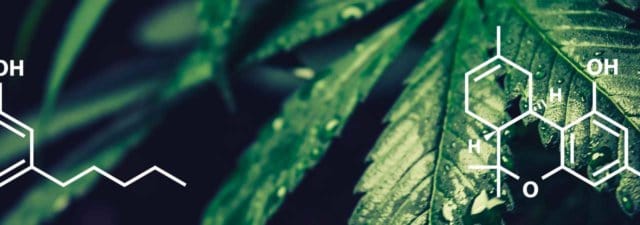Whenever CBD is being discussed, it is usually about whether or not it can help treat a particular condition, or if it is actually effective. In any CBD conversation, it won’t be long before the latest invention in the CBD world crops up – CBD Nano.
But what is CBD nano? Is it actually something that works, or is it just another scam designed to get you to buy products?
Let’s investigate CBD nano and determine whether or not it actually has any meaning. However, before we begin discussing CBD nano, we need to understand what bioavailability means.
What is Bioavailability?
To correctly understand what CBD nano means, we first need to examine CBD’s primary effects on the body, as well as bioavailability.
Bioavailability is a word we used to describe how effective a particular substance is at being absorbed into the body. Though you might imagine that every single thing we consume or put in our bodies is used wholly, it turns out that our bodies are only so effective at digesting things.
This works for both your ability to digest food and for your body’s ability to accept medicinal drugs. For example, when eating raw vegetables, the cellulose that makes up the cell walls of the plant is typically indigestible by the human stomach.
With drugs, this happens on a much more microscopic level; when you first imbibe a substance, it finds its way to your liver, which is where it seems to be broken down into more elements that your body can actually use.
This occurs due to an enzyme called CYP3A4, which is what is responsible for turning the conventional chemical composition of drugs into something that can affect your body.
However, the bioavailability of a drug is what determines what percentage of the substance your body can actually utilize. With CBD, this is typically very low – sometimes as little as 6% when taken orally, as discovered by in a study conducted by Welty et al.
If this makes you worry for the effectiveness of your CBD dosage, don’t fret; this limited bioavailability is well known to manufacturers, so they measure their products suitably to make sure you still get the desired effect.
However, this does mean that, if we were able to increase the bioavailability of CBD, we would need to imbibe far, far less to get the same effect, as less would be being wasted by our bodies.
One of the ways that CBD manufacturers are touting at being able to help increase bioavailability is through nanotechnology.
What is Nanotechnology?
Simply put, nanotechnology is anything involving reducing the size of something to nanoscopic dimensions.
No, this isn’t anything to do with Honey I Shrunk The Kids, it is in fact orders of magnitude smaller than the size those kids ended up being shrunk to.
For a point of comparison, a single molecule of cannabidiol (CBD) is about 4440 Nanometers in diameter. So, when companies are talking about shrinking particles down to the size of nanoparticles, that means they are shrinking it down by 4440%!
The idea behind this is that, by shrinking the particles down to a small enough size, the body is more easily able to break it apart and process it into useable compounds that can interact with the body’s endocannabinoid system (ECS).
However, is this true? While it does sound very impressive, is it actually possible to increase CBD’s bioavailability by shrinking it down to the size of nanoparticles?
What Science Has to Say About CBD Nano
Nanotechnology isn’t something limited to the cannabis world; scientists have been experimenting with using nanoparticles for decades now, both in the hope of improving the effectiveness of other drugs and in possibly creating nanomachines that are capable of altering things on a subatomic level.
However, the realm of nanotechnology and cannabis is one that is still rather unexplored. There have been a few studies focused on its effectiveness, but there have been far more companies selling CBD nano or other similarly branded products claiming that it works.
Of the few studies conducted about CBD nano, the overall consensus is one of positivity – generally speaking, it seems to work.
However, the actual way in which it works isn’t quite what you would expect.
Why CBD Nanotechnology Works
The different CBD retailers that sell CBD nano claim that the reason it works is because the smaller particle size of the CBD molecules makes it easier for them to be carried by the blood supply. This ensures that all the CBD will reach the liver.
Well, according to a few studies, such as this one by Duran-Lobato et al. for the Journal of Drug Development and Industrial Pharmacy, the main reason that nanoparticles work regarding CBD is because of their lipophilic qualities.
Basically, molecules can be one of two things: Hydrophilic or lipophilic. This means that some particles can naturally attach themselves to water-based molecules, whereas other ones are able to connect themselves to lipid-based molecules.
However, there are some molecules that are able to do both – they act somewhat like a double-ended magnet, with a hydrophilic end and a lipophilic end. This allows them to serve as a bridge for molecules that wouldn’t usually be able to connect under normal circumstances.
This is important when talking about CBD, because cannabinoids in general are lipophilic, as well as being hydrophobic. This means that generally speaking, a CBD molecule will try and repel water molecules that seek to bind to it. This is understandably a problem when trying to consume CBD, as our bodies run using a hydrophilic system.
This is the fundamental reason why cannabinoid bioavailability it so low – they do not naturally bind with water molecules, so a lot of it gets wasted and is unable to be correctly processed. This can be noticed when you study the bioavailability of CBD when suspended in coconut oil.
When coconut oil is used, it tends to get caught in the gastrointestinal system, causing it to be more slowly digested than other foodstuffs. This also gives the body more time to retrieve the CBD from it. This is known as Intestinal Lymphatic Drug Delivery and was noticed by Hyeji Ahn and Ji-Ho Park in their study for the Journal of Biomaterials Research that it dramatically increased the rate of the CBD being accepted and utilized by the body.
However, once you start to break the size of the cannabinoid particles down, everything begins to change.
By breaking CBD molecules down to nanoparticle size, scientists found that they began to act differently when compared to their larger sized cousins. The actual mechanisms of this aren’t entirely sure yet, as when you start to deal with the subatomic world, everything starts to get a little bit confusing, but the fact of the matter is that, by breaking CBD down to nanoparticle size, it is able to bind more readily to both lipids and water.
Another study, conducted by Esposito for the European Journal of Pharmaceutics and Biopharmaceutics, found that by breaking down the CBD’s size into nanoparticles, they were able to surround them with Nanostructured Lipid carriers, in effect transforming the already lipid-tolerant particles into entirely lipophilic particles.
It is this method through which most CBD nano is made and sold. It isn’t that turning CBD particles into nano size magically makes them massively better; it’s just that they have been covered with a lipophilic coating, namely URB597, AM251, and Rimonabant.
This is what turns CBD, a usually rather difficult particle to get your body to accept and be integrated into your endocannabinoid system, into a more useful substance.
So, Is CBD Nanotechnology Actually Real?
After all this, the question remains whether or not CBD nano is actually the real deal and if you should start buying it. Though there is still a rather significant lack of available research on nanoparticles and their properties, the fact does remain that CBD nano does appear to work quite well.
However, it is often marketed somewhat incorrectly, focusing on the tiny size of the particles rather than what they have actually done with those particles. Make sure you remember that the reason these CBD nanoparticles work is that they are coated and bonded with a lipophilic barrier.
In effect, though the marketing often isn’t correct, CBD nano absolutely does work. It’s entirely possible that in a few years, CBD nano is the only way anyone will be making or using CBD.
That being said, there is still plenty of research to do to discover whether or not it has any long-term viability, or if there is some other way to consume CBD even more easily. Until that point, however, consider trying out some CBD nano if you can get your hands on some; it might work even better than you might expect.


![Bisabolol Cannabis Terpene [All You Need to Know]](https://marijuanabreak.com/wp-content/uploads/2020/11/wol-banner-bisabolol-cannabis-terpene-640x225.jpg)
![Can CBD Oil Be Taken with Ibuprofen? [What the Science Says]](https://marijuanabreak.com/wp-content/uploads/2020/08/wol_can-cbd-oil-be-taken-with-ibuprofen-1-640x225.jpg)
![What Is Myrcene? [The Cannabis Terpene Explained]](https://marijuanabreak.com/wp-content/uploads/2019/10/mj_mj_what_is_myrcene_1920-min-640x225.jpg)

![Medical Cannabis Vs. Morphine [The Difference]](https://marijuanabreak.com/wp-content/uploads/2018/11/mj_medical-cannabis-versus-morphine-640x225.jpg)




![Top 10 Cannabinoids: What Are They and What Do They Do? [GUIDE]](https://marijuanabreak.com/wp-content/uploads/2018/09/wol_top-cannabinoids-and-what-they-do-640x225.jpg)
